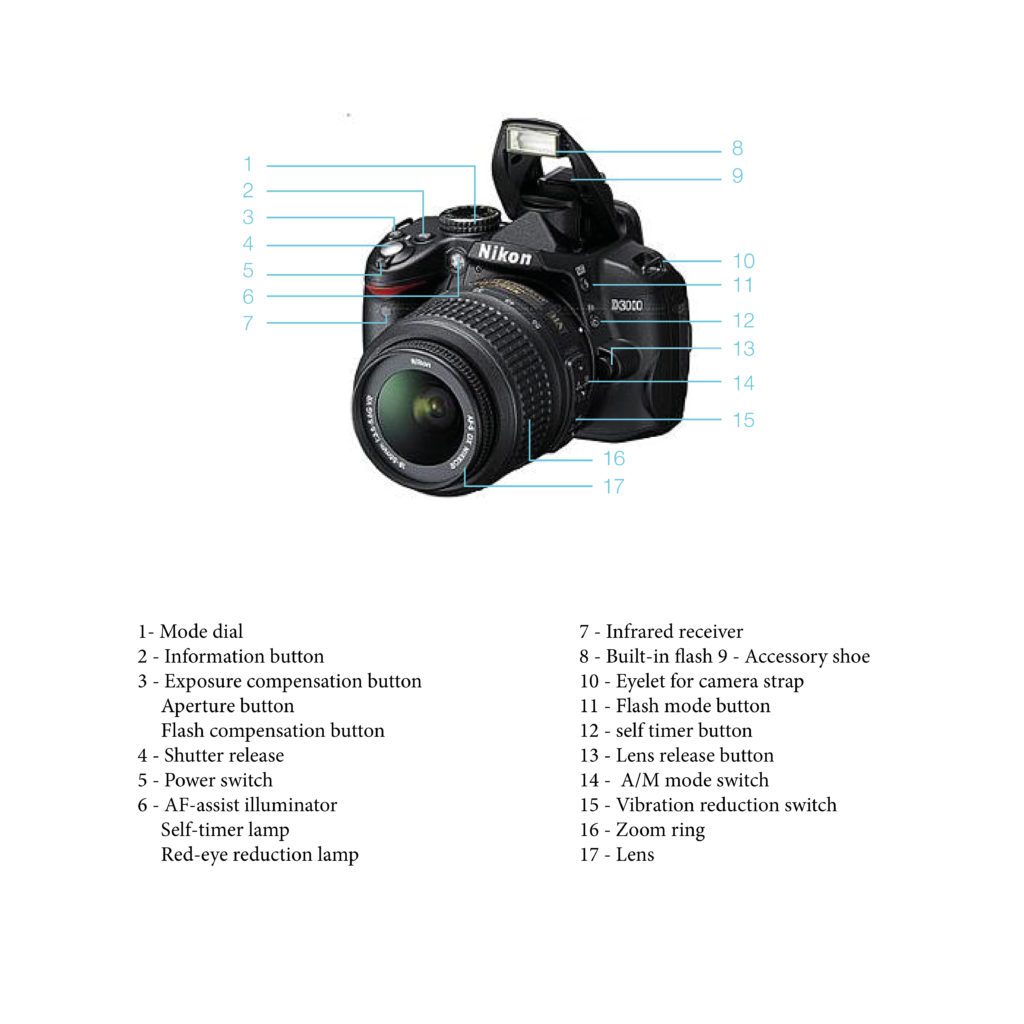Brief:
- Name all the functions/buttons on the front of your camera.
- Name all the functions/buttons on the back of your camera.
- Explain, in your own words, what ISO is and how you would set it.
Now take three images of the same scene at ISO 100, ISO 1600, and your camera’s highest ISO setting. Place them next to each other to see the impact this had and post them to your blog. (Remember to include details about your camera settings on your blog.) - Explain, in your own words, what aperture is and how you would change it.
Now take three images of the same scene and set your aperture to F22, F5.6, and F1.4, (or the lowest possible f-stop your lens would allow), respectively. Place them next to each other to see the impact this had and post them to your blog. Remember to include details about your camera settings on your blog. - Explain in your own words* what shutter speed is and how you would change it.
Now take three images of the same scene and set your shutter speed to 1/1000, 1/60, and 1/4, respectively. Place them next to each other to see the impact this had and post them to your blog.(Remember to include details about your camera settings on your blog.)
This week is hard for me, as I`ve never owned a camera other than the one-time use ones we had in the 80s. I asked a photographer friend of mine and classmates which camera I should invest in and ended up with a Nikon D3000. I’ve read all the material, seen videos, and done research on my particular camera going through the manual and Nikon’s webpage. I never knew how much goes into taking a good photo, and I have my work cut out for me this week to try and produce anything worth seeing 😀
I made the function list in INDD and uploaded JPGs


What is ISO
In simple terms, it is a camera setting that will darken or brighten a photograph. If you increase the ISO number the picture will get brighter, likewise, if you lower it, the picture will get darker. The downside to changing from the recommended setting, which is usually 100 or 200, the standard for digital cameras, is that the picture becomes more grainy and noisy the more you adjust the ISO. For this reason, photographers recommend first trying to change the settings using shutter speed or aperture.
In order to change iso settings on my camera, I go to the menu, ISO sensitivity settings, and change to my desired number there.

Nikon D3000, Auto mode – 100 ISO

Nikon D3000, Auto mode – 1600 ISO

Nikon D3000, Auto mode – Hi 1 ISO (this is the highest setting on my camera, after 1600)
What is Aperture
Aperture is the eye of the camera. It is the opening in the lens where the light passes through. As with the pupil of the eye, the aperture will expand in dark places to focus more on what it sees, and shrink in the light, to lessen the light and thereby focus on what you see.
In order to set the aperture on my camera, I set the mode dial to A, and use the scroller to change the aperture I want.
For this assignment we were to use the lowest f-stop setting on one of the photos, this is F4.8 on my camera.

Nikon D3000, F4.8 – 100 ISO – 1/500

Nikon D3000, F5.6 – 800 ISO – 1/500

Nikon D3000, F22 – 1000 ISO – 1/500
What is shutter speed
Shutter speed refers to the length of time the camera shutter is open, and how long light will be exposed to the camera sensor. Changing this setting creates different effects on the picture taken.
If you use a long (or slow as it is also called) shutter speed the effect will be motion blur due to the long period of time the sensor is exposed to light. This is typically used for moving objects, giving the final image a directional blur that gives a sense of speed and motion.
Fast shutter speed is usually used to create the opposite effect, which is freeze motion. The amount of time light is exposed is really short, and will freeze the frame to where you can see a flying bird completely still, picture sharp.
I would change the shutter speed on my camera by moving the wheel to S, and scrolling to get the speed I need.

Nikon D3000, F5.6 – 100 ISO – 1/4

Nikon D3000, F5.6 – 400 ISO – 1/60

Nikon D3000, F5.6 – 1000 ISO – 1/1000
Throughout this lesson, I have struggled to find the balance of the triad, iso, Aperture, and shutter speed. I got some much-needed help from others in the class, but I will still need to work hard to understand what I am doing. In the end, I got pictures that wasn’t to dark, too light, or too blurry, but I am still not confident about the camera 😉

